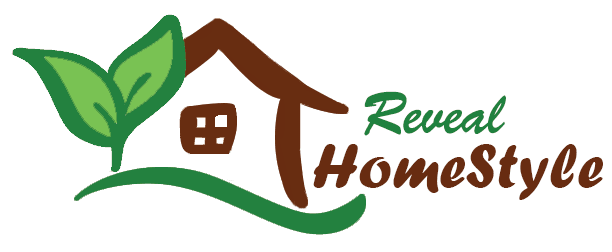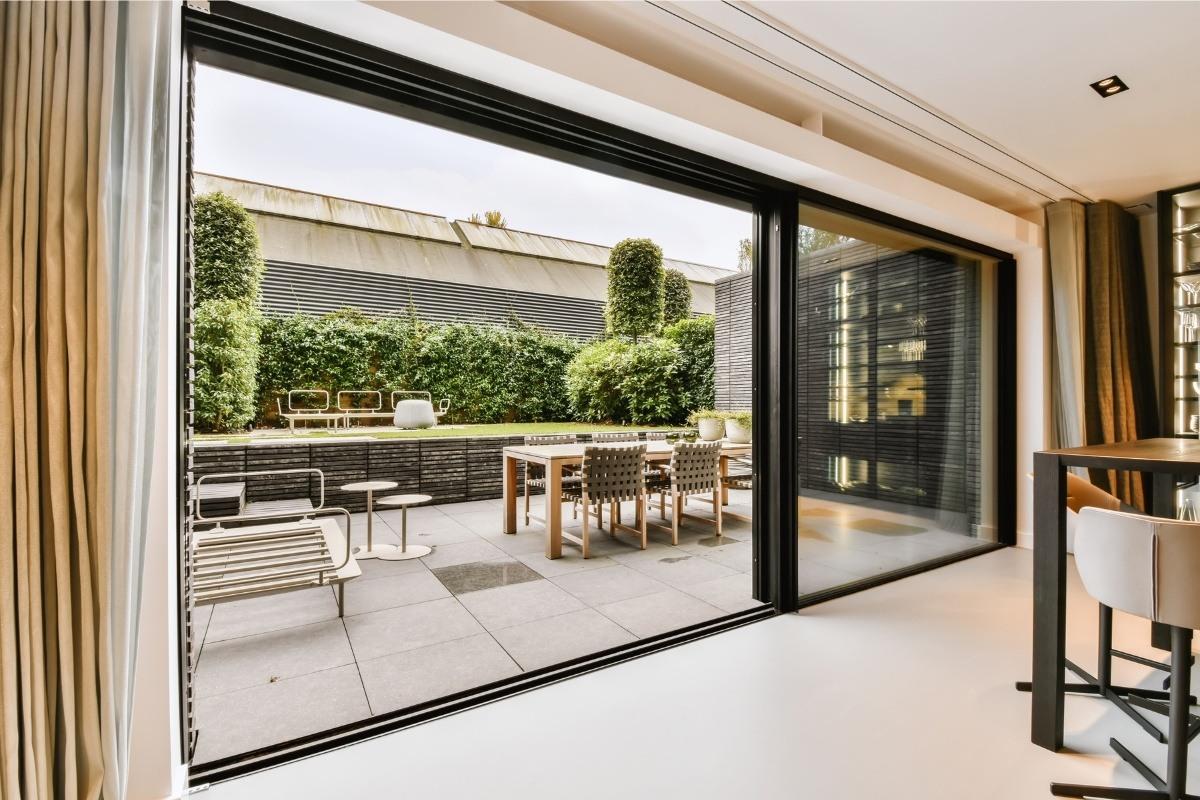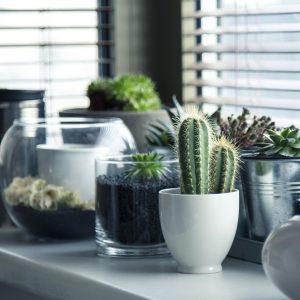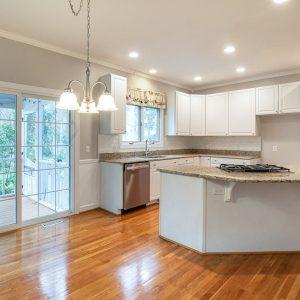Table of Contents
When considering a home renovation or extension, the choice between bifolding and sliding doors can significantly impact your living space. Both options offer unique benefits, and the decision ultimately depends on your specific needs, preferences, and the architectural features of your home. This comprehensive guide will help you navigate the key factors to consider when choosing between bifolding and sliding doors.
Understanding the Basics: Bifolding vs Sliding Doors
Before looking at the specifics, it’s crucial to grasp the fundamental differences between bifolding and sliding doors. These distinctions form the foundation of your decision-making process.
Bifolding doors, often called folding-sliding doors, consist of multiple panels that fold and stack neatly to one or both sides when opened. This accordion-like mechanism allows for a wide opening, effectively blurring the line between indoor and outdoor spaces. The versatility of bifolding doors makes them a popular choice for those seeking to create a seamless flow between their home and garden.
Sliding doors, in contrast, operate on a simple track system where panels glide horizontally to open and close. Typically comprising two or more large glass panels, sliding doors offer a clean, minimalist look and unobstructed views even when closed. Their straightforward operation and sleek design have made them a timeless choice for many homeowners.
The choice between these two door types often comes down to personal preference, architectural considerations, and how you envision using the space. Bifolding doors excel in creating wide openings and a sense of openness, while sliding doors offer simplicity and maximise views year-round.
Aesthetic Appeal and Design Considerations
When it comes to choosing between bifolding and sliding doors, the aesthetic impact on your home’s interior and exterior is a crucial factor to consider. Both door types offer distinct visual advantages, and your choice can significantly influence the overall look and feel of your living space.
Bifolding doors, with their multiple panels and unique folding mechanism, create a striking visual effect when fully opened. They can transform your living area into an expansive, open-plan space, seamlessly connecting your interior with the outdoors. This dramatic transformation can be particularly appealing for those who enjoy entertaining or simply want to maximise their indoor-outdoor living experience.
The frame design of bifolding doors, while necessary for their functionality, does result in more visible framing when closed. This can create an interesting architectural feature, adding character to your space. However, it’s worth noting that these frames may slightly obstruct views compared to sliding doors.
Sliding doors, on the other hand, offer a more minimalist and contemporary aesthetic. Their large glass panels and slim frames provide expansive, uninterrupted views of the outdoors, even when closed. This makes them an excellent choice for homes with picturesque gardens or scenic views that you want to enjoy year-round.
Functionality and Practicality
When choosing between bifolding and sliding doors, it’s essential to consider how each option functions in day-to-day use and how this aligns with your lifestyle and needs.
Bifolding doors offer unparalleled flexibility in terms of opening options. They can be partially or fully opened, allowing you to adjust the size of the opening to suit your needs. When fully opened, they create a wide, unobstructed space, effectively removing the barrier between indoor and outdoor areas. This makes them ideal for entertaining or for those who enjoy a seamless indoor-outdoor living experience.
However, it’s worth noting that bifolding doors require more clearance space when open, as the folded panels stack to one or both sides. This means you’ll need to consider furniture placement and ensure there’s enough room for the doors to operate freely.
Sliding doors, in contrast, offer simplicity and ease of use. They glide smoothly along a track, requiring minimal effort to open and close. Unlike bifolding doors, they don’t need additional space to open, making them an excellent choice for areas where space is at a premium.
One potential drawback of sliding doors is that they typically can’t open as wide as bifolding doors. Even when fully open, at least one panel will remain in place, partially obstructing the opening. However, this can be an advantage in terms of security and privacy, as you can easily adjust the opening size.
In terms of everyday practicality, sliding doors often have the edge. They’re easier to open and close quickly, which can be beneficial in changeable weather conditions. They also tend to be more child and pet-friendly, as there are no complex mechanisms or multiple panels to navigate.
When it comes to maintenance, both door types require regular cleaning and occasional lubrication of moving parts. Bifolding doors, with their multiple panels and hinges, may require slightly more maintenance to ensure smooth operation.
Consider your daily routines, how you plan to use the space, and your long-term maintenance preferences when weighing up the functionality and practicality of each door type.
Space Considerations and Room Layout
The impact of your door choice on your room’s layout and overall space utilisation is a crucial factor to consider when deciding between bifolding and sliding doors.
Bifolding doors, when fully opened, can create a dramatic transformation of your living space. They effectively remove the barrier between indoors and outdoors, allowing for a seamless flow between the two areas. This can be particularly advantageous if you have a patio or deck area that you want to integrate with your interior living space.
However, it’s important to consider the space required for the door panels when they’re folded open. Bifolding doors need clearance space on one or both sides of the opening to accommodate the stacked panels. This could impact your furniture arrangement or limit the usable space in the immediate vicinity of the doors.
Sliding doors, in contrast, require minimal clearance space to operate. They simply glide along their tracks, overlapping each other when opened. This makes them an excellent choice for rooms where space is at a premium or where you want to maximise the usable floor area right up to the door opening.
Thermal Efficiency and Insulation
In today’s energy-conscious world, the thermal efficiency of your doors is a crucial consideration. Both bifolding and sliding doors can offer excellent insulation properties, but there are some differences to be aware of.
Sliding doors, with their larger glass panels and fewer frame sections, often have a slight edge in terms of thermal efficiency. This is because double or triple glazed glass can provide better insulation than the frame material. The minimal frame design of sliding doors means there are fewer potential weak points for heat loss.
However, it’s important to note that the overall thermal performance of sliding doors can be affected by the quality of the seals around the sliding panels. High-quality sliding door systems use advanced sealing technology to ensure excellent insulation when closed.
Bifolding doors, while having more frame sections, can still offer impressive thermal efficiency. Modern bifolding door systems use thermally broken frames and high-performance weather seals to minimise heat loss. The multiple panels of bifolding doors can create additional air pockets, contributing to improved insulation.
Security Features
Security is a paramount concern for any homeowner, and both bifolding and sliding doors offer robust security features when properly designed and installed.
Sliding doors typically feature fewer locking points compared to bifolding doors, but modern systems incorporate multi-point locking mechanisms that secure the door along its entire height. High-quality sliding doors often use toughened or laminated glass, which is difficult to break, and may include anti-lift devices to prevent the door from being lifted off its tracks.
One potential security advantage of sliding doors is that they always have at least one panel fixed in place, which can be securely anchored to the frame. This can provide an additional layer of security.
Bifolding doors, with their multiple panels, often incorporate a greater number of locking points. Each panel typically has shoot bolts at the top and bottom, and the main opening leaf will have a multi-point locking system. This distributed locking system can provide excellent security when all points are engaged.
However, it’s important to ensure that all locking points on bifolding doors are properly engaged, as leaving even one unlocked could compromise the overall security of the door.
Both door types can be fitted with high-security cylinders and handles, and many manufacturers offer options that meet or exceed industry security standards such as PAS 24 in the UK.
Cost Considerations
When deciding between bifolding and sliding doors, cost is often a significant factor. It’s important to consider not just the initial purchase and installation costs, but also long-term factors such as energy efficiency and maintenance.
Generally speaking, sliding doors tend to be less expensive than bifolding doors of a similar size. This is primarily due to their simpler design and fewer moving parts. However, the cost can increase significantly for very large sliding door systems or those with advanced features like lift-and-slide mechanisms.
Bifolding doors, with their more complex folding mechanisms and multiple panels, typically come with a higher price tag. The cost can vary depending on the number of panels, the chosen material, and any additional features like integrated blinds or specialised glass.
Conclusion
Ultimately, whether you choose bifolding or sliding doors, you’re making an investment that can significantly enhance your living space and potentially add value to your home. With careful consideration and quality implementation, your new doors will provide you with years of enjoyment, comfort, and style.



